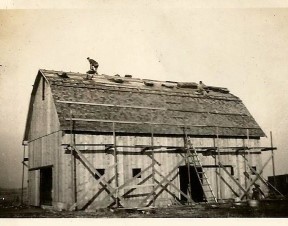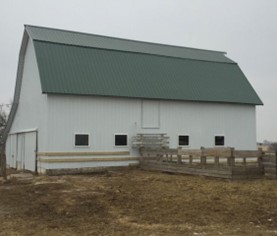 If you’ve ever enjoyed the sight of a century-old barn standing alongside a rural highway — historical monuments with faded red paint, expertly built with sturdy foundations and strong frames — then you might be able to relate to veteran agricultural broadcaster Gene Millard.
If you’ve ever enjoyed the sight of a century-old barn standing alongside a rural highway — historical monuments with faded red paint, expertly built with sturdy foundations and strong frames — then you might be able to relate to veteran agricultural broadcaster Gene Millard.
Millard grew up on a family farm in Osborn, Missouri, and went to a school with only 16 people in his graduating class. After high school, Millard attended Colorado State University in Fort Collins, majoring in general agriculture. After taking the accelerated curriculum and graduating in 1963, he moved back to Missouri in search of employment. Having heard a radio advertisement for an assistant farm director at KFEQ Radio Station (St. Joseph, Missouri), he applied and, “amazingly enough,” was hired.
After spending nine years in that role, doing farm segments on both radio and television, Millard was offered the farm director position, where he stayed for the next four years. He was eventually offered an opportunity to become general manager of the radio station, and, while admitting to a “little bit of fear and trepidation,” he accepted.
Having grown up on a small farm, Millard said, he had a good idea of what farmers wanted to hear. A large portion of the programming on his station focused on “how-to” information based around the evolution of technology that was taking place on small farming operations everywhere.
 During the late 1970s and throughout the 1980s, Millard witnessed some tenuous years for the U.S. agriculture industry, reporting on political issues and events like the embargo of grain sales to the Soviet Union and inflationary pressures, that much like today, went rampant.
During the late 1970s and throughout the 1980s, Millard witnessed some tenuous years for the U.S. agriculture industry, reporting on political issues and events like the embargo of grain sales to the Soviet Union and inflationary pressures, that much like today, went rampant.
As farm broadcasters, Millard said, he and his team “had a role to play in terms of communicating what issues were out there and the conditions that were evolving so that producers could make the best choices for their own sustainable operations.”
As the U.S. agriculture industry continued to expand in the 1990s, farm broadcasters remained important sources of information for agricultural stakeholders on all sides of the issues. Being a member of the National Association of Farm Broadcasting (NAFB) gave Millard and his colleagues access to a substantial network of information sources and an ability to gain access to many of the decision makers, both at the state and national levels, allowing them to report agricultural news accurately.
As the demand for agricultural news grew, Millard said his broadcast news team felt even more pressure to report the truth—to provide more than just an information stream. Their presence as prominent agricultural broadcasters had created a platform that served as a magnet for the attention of policy makers. As a result, Millard said, they began to realize the importance of reporting on agricultural news that affected the industry nationwide.
“NAFB was a cohesive element to bring strength to every individual farm broadcaster around the country, giving them the opportunity to communicate on export and market development issues,” Millard said.
Millard has since retired, but he hasn’t lost touch with his broadcasting roots. He continued to host “Agri-Shop,” a live regional radio talk show, hosting call-in listeners on Saturdays for a number of years. He also was inducted into the Missouri Broadcasters Association’s Hall of Fame in 2019.
A self-described “ag man,” Millard has a historical monument of his own that continues to stand on his family farm today. Purchased by his grandfather and grandmother in 1905, the farm began with eighty acres. In 1920, with nothing but hand labor, they built a barn using salvaged wood from the original home that stood on the property.
 Millard said the barn has maintained its integrity, because like many other things in life, “you must have a solid foundation, and that is exactly what this structure has.”
Millard said the barn has maintained its integrity, because like many other things in life, “you must have a solid foundation, and that is exactly what this structure has.”
In 2010, Millard restored the barn, and it still stands strong and capable today.
